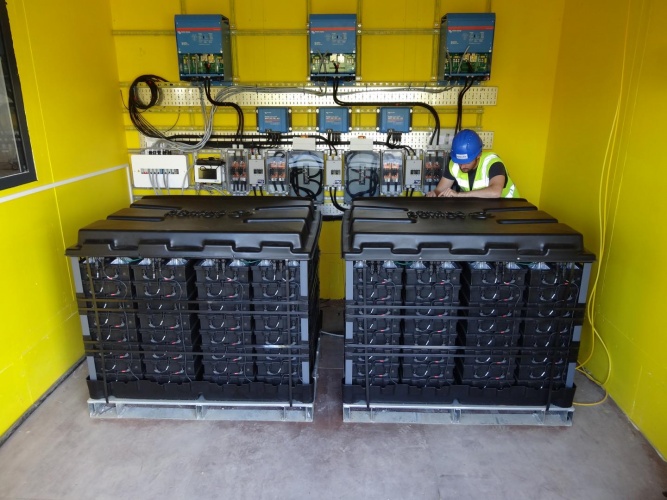Conductive liquids are vitally important to energy storage, as energy reservoir devices must contain a medium through which charged particles can move in order to operate. In most current battery systems, this role, called the electrolyte, is fulfilled by solutions. But these can cause problems: the conductivity can be low, and depends on the concentration of the charged species dissolved in the solution, and if flammable solvents are used, the electrolyte itself can be flammable or even explosive, as has happened with lithium ion batteries in laptops, electric vehicles and aircraft in recent years.

Ionic liquids offer an alternative to solutions. Often molten salts, these also contain mobile charged particles. Some enery storage researchers are looking to room temperature ionic liquids (RTILs) as an alternative as molten salts tend to be so hot that they cause more problems.
But the conductivity of RTILs is itself paradoxical. They are good conductors because they contain a very high concentration of ions, but this density of conductors should mean that positive and negative ions are close enough together that they cancel each other out; in theory, they should combine to create neutral particles which do not conduct electricity. The lack of understanding of why this does not happen has been a block for scientist trying to formulate RTILs with optional properties for energy storage or other applications.
The University of Leicester team is part of an international collaboration led by Prof Alexei Kornyshev of Imperial College London and Prof Guang Feng of the Huazhong University of Science and Technology. The Leicester team, led by applied mathematician Prof Nikolai Brilliantov, has published a paper in Physical Review X outlining how they believe RTILs behave.
Using numerical methods, Brilliantov has discovered that, most of the time, positive and negative ions do indeed cluster together to form an electrically neutral substance. But thermal fluctuations in the liquid can suddenly and randomly transfer energy to a pair of ions which release themselves from their paired neutral state and become freely moving particles. They soon re-pair with an ion of opposite charge, but as this happens, another pair elsewhere in the liquid will split, sustaining the conductivity and the current flow. This “relay race” of charges is similar to the behaviour of crystalline semiconductors, where electrons and “holes” emerge in pairs due to thermal fluctuations. The Leicester paper predicts that “a rich variety of physical phenomena observed in semiconductors might also be revealed in RTILs in the future.”
Brilliantov believes that this insight may lead to new rational designs for the conductors in RTILs which may be exploited in supercapacitors, fuel cells and batteries in future. "Understanding of the conductivity mechanism of RTILs seems to open new horizons in designing ionic liquids with the desired electrical properties," he said.




Nanogenerator consumes CO2 to generate electricity
Whoopee, they've solved how to keep a light on but not a lot else.